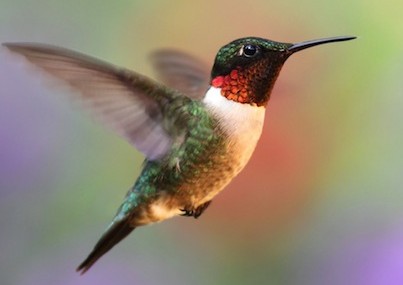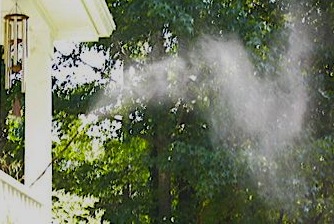-
Busy Buzzings Around the Ant Moats!
Dawn through early morning would definitely be the best time to catch local bird action around your yard. But let’s face it, not all of us are early-birds and busy schedules don’t always permit those few spare minutes of enriching watch time.
With southern migrations underway for many species, it’s a great time to catch the action! Dusk and the hour or two prior offer almost as much (if not more) backyard bird action.
Sitting on the deck last night with about 25 hummingbirds furiously buzzing about seemed almost magical. Sure we’ve had the sprites here all summer, but fewer numbers. Going through 15 pounds of sugar to keep 8 feeders filled and fresh over the last two weeks or so has been extra work but rewarding. So as not to waste a drop of nectar, the ever important ant moat is a true life saver, for the birds and for the wallet!
If you’ve been feeding hummingbirds for any amount of time, it’s likely you’re familiar with the handy-dandy device, but if this is season one of your new hobby, know that one little ant moat will save a whole lot of nectar!
Because ants can’t swim, feeders stay protected from the pesky things. But you must keep the moat at least half-full with water. Ants emit something truly nasty to hummingbirds, and it only takes one to ruin a whole feeder full of fresh nectar. With the feeding frenzy going on now, this is a big fat bummer for hummers!
If you’ve had a few sprites visit but are not really seeing them now… something’s wrong! Either nectar is not fresh, there are ants around, or even worse, yellow jackets 🙁 You can minimize the latter by keeping the outside of feeders clean, if they sway or leak, it’s an invitation to the nasty fliers.
Save money and provide hummingbirds the best nectar by making your own! It’s just plain table sugar and water… that’s it! No red dye, and nothing else for the solution as it’s harmful to their health. The standard ratio is 1:4 (1 cup sugar to 4 cups water) but at busy migration times when the hummingbirds are trying to fatten up for the long journey, the solution can be stronger, thus offering more calories. We go 1:3 when they arrive and when they depart.
Treat them well with fresh water sources (like a leaf mister shown here) and fresh food and they’ll grace your place next year. Site fidelity is another cool characteristic of these most intelligent birds!
If you put forth a little effort to help migratory birds on their way, you can sit back & enjoy the show.
Safe travels little ones, and we’ll see you next year on the flip side 🙂



